By John Gibler from the October 20th, 2008 issue of The Indypendent
On October 27, 2006, Brad Will stood on Juarez Avenue in the municipality of Santa Lucia del Camino, Oaxaca, Mexico. He was filming a violent clash between armed, civilian-clad municipal police and officials and members of the Oaxaca Peoples’ Popular Assembly, or APPO.
Brad, a longtime New York City activist and independent journalist, traveled to Oaxaca in early October 2006 to report on the protest movement led by the state teachers union that sought to oust governor Ulises Ruiz of the Institutional Revolutionary Party, or PRI, which had ruled Oaxaca with an iron fist for almost 80 years.
Brad stood amid the APPO protesters and other journalists, filming down the length of Juarez Avenue where armed officials were firing at the protesters. Brad was shot and fell to the ground, his camera still running, having recorded the sound of the shot that hit him. Brad was shot from straight on, just below the chest, and yet his killer does not appear in the camera frame at the moment of the gunshot. Brad died on the way to the hospital. He had been shot twice.
 PHOTO: IN BROAD DAYLIGHT: Moments before Brad Will was shot and killed October 27, 2006 in Santa Lucia del Camino, Oaxaca, Mexico, several local officials were filmed and photographed firing in the direction of Brad and anti-government protesters. (From left to right) Juan Carlos Soriano Velasco, a municipal police officer, town official Orlando Manuel Aguilar Coello and Abel Santiago Zarate, a member of the state government. Aguilar Coello and Zarate were both briefly detained after Brad’s death but were soon released when Oaxacan authorities mistakenly asserted that the two bullets that killed Brad did not come from a .38 revolver like the ones that both men were using that day.
PHOTO: IN BROAD DAYLIGHT: Moments before Brad Will was shot and killed October 27, 2006 in Santa Lucia del Camino, Oaxaca, Mexico, several local officials were filmed and photographed firing in the direction of Brad and anti-government protesters. (From left to right) Juan Carlos Soriano Velasco, a municipal police officer, town official Orlando Manuel Aguilar Coello and Abel Santiago Zarate, a member of the state government. Aguilar Coello and Zarate were both briefly detained after Brad’s death but were soon released when Oaxacan authorities mistakenly asserted that the two bullets that killed Brad did not come from a .38 revolver like the ones that both men were using that day.
Two years later, on October 16, 2008, the Mexican federal government arrested two members of the APPO, charging Juan Manuel Martinez as the gunman and Octavio Perez with helping to cover up Brad’s murder (Perez was later released on bail). Federal police were still looking for other suspected accomplices, all members of the APPO who had tried to carry Brad to safety and save his life.
The arrests came after a series of human rights reports criticized the government’s investigation for failing to follow leads pointing to local officials who were widely photographed by the press shooting at APPO protesters on October 27, 2006.
“It is such a coverup,” said Kathy Will, Brad’s mother, in a telephone interview on learning of the arrests. “It is an insult to us and to all of the groups that have tried to help with a meaningful investigation.”
LONG-RANGE SHOT
Whether Brad Will was shot at close or long range lies at the heart of the controversy over the government’s investigation and the recent arrests. Local police in civilian clothing and municipal officials in Santa Lucia del Camino were filmed and photographed firing on the APPO protesters among whom Brad Will was standing when he was shot. The federal government however, has not investigated the involvement of the local officials.
More than a dozen protesters and press photographers surrounded Brad when he was shot. All those interviewed said that the bullets came from down the street. Moments before Brad was killed, the Milenio newspaper photographer Oswaldo Ramirez was shot in the leg. The Mexican Office of the Federal Attorney General, or PGR, however, has neither interviewed Mr. Ramirez nor investigated the shooting.
“All the shots were coming from down the street, where the paramilitaries had gathered,” said Mexican journalist Diego Osorno, who covered the battle for Milenio that day and later wrote about it in his book Oaxaca Under Siege.
“As journalists, we were all focusing on the paramilitaries as the source of the gunfire,” he said.
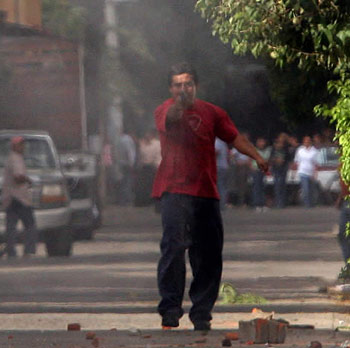 PHOTO: SHOOT TO KILL: Pedro Carmona, a town official in Santa Lucia del Camino, opens fire on protesters shortly before Brad Will was killed. One of his targets was Mexican photographer Raul Estrella “I heard the bullet whiz by my head and that’s when I left,” Estrella later recalled.
PHOTO: SHOOT TO KILL: Pedro Carmona, a town official in Santa Lucia del Camino, opens fire on protesters shortly before Brad Will was killed. One of his targets was Mexican photographer Raul Estrella “I heard the bullet whiz by my head and that’s when I left,” Estrella later recalled.
Raul Estrella, a photographer for El Universal who won an international photojournalism award for his coverage of the Oaxaca conflict, said that Pedro Carmona, a municipal official, shot at him when he noticed Estrella taking his picture shortly before Brad Will was killed.
“I heard the bullet whiz by my head and that’s when I left,” Estrella, who took a now-famous photograph of Carmona and other Santa Lucia del Camino officials shooting at the protesters, said in an interview in 2007.
The PGR has not charged Pedro Carmona with attempted murder, nor did they interview him in Brad’s case.
The Mexican authorities claim that Brad’s killers shot him at close range, at a distance of two meters (about six-and-a-half feet), implicating the APPO protesters themselves, rather than the gunmen located down the street.
Witnesses, independent experts, and the Mexican governmental human rights group all challenge the PGR’s short-range hypothesis.
Gustavo Vilchis, a photographer for a Oaxacan human rights organization whose photographs were recently published in the book Teaching Rebellion, helped carry Brad once he was brought around the corner and onto Arboles Street. He offered his eyewitness testimony to the PGR back in March of 2007. He said that the men who brought Brad to Arboles Street were trying to save him. “Why try to save someone you want to kill?” he asked.
An independent investigative team from Physicians for Human Rights traveled to Mexico earlier this year and issued a report on May 23 calling on the PGR to investigate paramilitary involvement.
On September 26, the Mexican governmental National Human Rights Commission (CNDH) released a report highly critical of the government, charging that state and federal authorities violated the victim’s and his family’s human rights through their systematic failures to properly investigate the murder.
The recent arrests came a day before the deadline for the PGR to respond to the CNDH report.
“Take a look at Brad’s last frame; there is nobody in that frame,” said Kathy Will, “Two meters away? Come on! They are defying all logic and it just goes to show how corrupt they are. It wasn’t a short range shot and everybody knows that.”
The Will family and the Physicians for Human Rights investigators both pointed out the federal government’s failure to investigate 17 other murder cases during the 2006 Oaxaca conflict where witness testimony and photographic and video evidence indicate police participation in the killings.
“The involvement of civilian-clad police officers in death squads has been well documented,” said Mexican journalist Diego Osorno.
The federal government colluded to cover up Ulises Ruiz’s crimes, Osorno said, to secure the PRI’s support for President Felipe Calderon’s contested 2006 election victory, as well as for energy reforms that include the controversial privatization of sectors of Mexico’s state oil company.
Calderon’s National Action Party, or PAN, has traditionally been a rival of the PRI.
“Calderon has no other option,” he said. “He came to power very weak and that has made him beholden to more powerful groups, such as the PRI.”
THE PGR THEORY
The PGR’s case against Juan Manuel Martinez and the other members of the APPO is built around a single witness’ testimony. That witness, Adolfo Feria, says that he saw Juan Manuel Martinez fire the fatal shot. It turns out, however, that Adolfo Feria is the cousin of the mayor of Santa Lucia del Camino, Manuel Martinez Feria, whose police and city officials led the armed attack on the APPO protesters.
The PGR also shared a slide show with the press on Friday, October 17. Although very brief, the slide show contains several contradictions.
One slide says that the gunman fired the first shot from a distance of two meters. The visual to support that slide is a still from Brad’s camera showing a cluster of protesters in front of Brad. The protester that the PGR identifies as the shooter stands about five meters away. The still was taken only milliseconds before Brad was shot. The supposed shooter is not pointing a gun at Brad.
Another slide says that the shooter fired a second shot into Brad’s side, standing between two and eight meters away, while others carried him behind a van. The visual slide to support this statement is a computer illustration that shows the shooter standing less than half a meter away from Brad while firing.
The PGR’s own visual representations do not correspond to its statements.
BLAMING THE VICTIMS
Mexican state and federal officials have insisted from day one on an impossible scenario: that one of the APPO members standing near Brad shouted at him to stop filming and then killed him when he did not obey—shooting him at close range in front of scores of witnesses without anyone seeing him, without leaving gun powder burns near the wound or on Brad’s shirt, and without appearing in Brad’s camera frame.
Brad’s family retained a lawyer in Mexico and has since traveled there twice to meet with state and federal officials. Their sole demand has been that the investigation consider and exhaust all possibilities. The Mexican government has refused, focusing solely on the hypothesis that the APPO killed Brad.
The troubled defense of the government’s “the APPO did it” theory began with then-Oaxaca State Attorney General Lisbeth Caña. On November 15, 2006, Caña called a press conference in Oaxaca City, flipping through a Power Point presentation with elaborate—though nonsensical—charts and graphs all pointing to the conclusion of the disgruntled APPO shooter.
Caña’s theory was that one of the APPO protesters told Brad to “stop taking pictures,” while he cocked a nine-millimeter pistol. As soon as he finished his sentence, the masked protester shot Brad. The bystanders who tried to take Brad to the hospital, the theory says, were in fact co-conspirators who drove him away from the crowd only to fire a second shot into his side.
Even at first glance, this theory is absurd. Brad was not “taking pictures.” He was filming; and, yes, the APPO protesters know the difference. The killer could not have shot Brad straight on without appearing in the camera frame. Also, the day after Brad was killed, the national Mexican daily Milenio published on the front page a photograph of bystanders carrying Brad to a car. Both gunshot wounds are clearly visible in the photograph. The work of other Mexican photojournalists, such as Javier Otaola of the national daily Excélsior, also clearly show that the two gunshot wounds were both present before Brad was driven off to the hospital.
And, jumping ahead, we now know that Brad was not shot with a nine-millimeter pistol, but with a .38 revolver—a gun that does not make any cocking sound such as that supposedly heard on Brad’s tape.
Brad’s parents, Kathy and Hardy, and his brother Craig traveled to Oaxaca on March 21, 2007, to meet with the state government investigators. At the beginning of the meeting, one of Caña’s assistants loaded a PowerPoint presentation dated November 15, 2006. Hardy noticed the date and asked: “Does this mean that you haven’t done anything in the past four months?”
Caña said that they had the wrong PowerPoint, apologized, and dispatched her assistant to bring the correct one. A few tense moments later the assistant returned and loaded the same Power Point presentation, this time dated March 21, 2007.
When Brad’s family realized that they were being led through the exact same presentation that had been paraded before the press the previous November, they asked Caña to stop the Power Point and to share any new information she had gathered. She had none. Had she interrogated the municipal officials photographed shooting at protesters on October 27, the family asked. She had not. Had she interrogated witnesses? She had not. Had she gathered ballistics information on the guns fired that day? She had not.
Infuriated, the family asked to view the case file—a right granted under Mexican law to the family members of murder victims. Caña said that they could not view the case file. Why? Because they had just that moment finished boxing it up to ship it to the federal government. Caña was asking that the Mexican federal attorney general take over the case. With that the meeting was over.
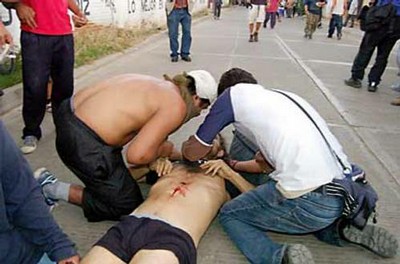 PHOTO: GUNNED DOWN: Brad Will is attended to after being shot twice just below the sternum. He died en route to a nearby hospital when the taxi he was being transported in ran out of gas. Despite overwhelming forensic and documentary film evidence to the contrary, The Mexican government claims that Will was shot at close range by a disgruntled protester and that the people who came to his aid conspired to finish him off with a second gunshot while traveling to the hospital.
PHOTO: GUNNED DOWN: Brad Will is attended to after being shot twice just below the sternum. He died en route to a nearby hospital when the taxi he was being transported in ran out of gas. Despite overwhelming forensic and documentary film evidence to the contrary, The Mexican government claims that Will was shot at close range by a disgruntled protester and that the people who came to his aid conspired to finish him off with a second gunshot while traveling to the hospital.
THE FEDS TAKE THE CASE
The following day, Kathy, Hardy, Craig and their lawyer Miguel Angel de los Santos met for over 12 hours with officials at the PGR office in Oaxaca. They were able to review the case file (just unpacked), ask questions and submit evidence collected by their lawyer, such as the published photographs showing the presence of both gunshot wounds before Brad was driven from the scene.
The PGR officials, while assuring the family that they were more professional and impartial than the Oaxaca state investigators, refused to accept the photographic evidence, arguing that the photographs could have been tampered with.
Still, after the incompetence and insensitivity of the Oaxaca state investigators, the PGR officials’ ardent assurances of their academic pedigrees and distance from local politics led the family to feel somewhat better. Perhaps now, with the PGR taking over the case, they told me at the time, the government will conduct a serious and unbiased investigation.
That was March 2007. When Kathy and Hardy returned to Mexico almost a year later, in late February 2008, they were eager to learn of the PGR’s progress.
They were appalled to learn that there still had been no progress.
The federal special prosecution team investigating Brad’s murder was still proceeding under the assumption that Brad was shot at close range and that he received the two shots in different locations—the two assumptions first presented as evidence by Lisbeth Caña.
The PGR said that they would conclude their investigation and seek arrest warrants in a matter of weeks.
Through the efforts of Kathy and Hardy, a Physicians for Human Rights (PHR) team volunteered to travel to Mexico to review the investigation. Dos Santos, the Wills’ lawyer, then obtained formal approval from the PGR for PHR to make their examination.
In addition, an expert video forensics analyst studied Brad’s last tape. (The video analysis has not been released yet. However, preliminary findings show a bullet streak descending across the camera frame milliseconds after the shot is heard and milliseconds before Brad cries out. The forensic video expert has told the family that a close range shot is categorically impossible.)
In the months after the February meeting, while the PHR experts were reviewing the evidence, the federal officials remained silent.
Physicians for Human Rights concluded its review and sent a full report to the family and the Mexican government in late May 2008. In a May 23 press release, PHR wrote that the Mexican federal investigation has “shortcomings in efforts to locate all firearms in the possession of police, paramilitaries, and others who were present at the scene; a singular focus by Mexican authorities on a working hypothesis that the gunshots originated from Will’s immediate surroundings; and a failure to investigate other instances of injuries or deaths in Oaxaca that might reveal a pattern of violence leading to the perpetrator(s).”
The Mexican authorities did not respond to the PHR report, instead leaking a story to the Mexican press claiming that the federal investigation had concluded that the APPO killed Brad.
On May 26, Misael Sánchez published an article in the Oaxaca-based pro-government newspaper El Tiempo headlined: “The PGR concludes: The APPO killed Brad.” On the same day, Ricardo Alemán published an article in the national newspaper El Universal headlined, “Bradley Will’s killer, from the APPO?”
Both articles cite only unnamed sources within the PGR who claim to have concluded their investigation, having gathered irrefutable evidence that Brad was shot at close range. Both articles repeat the impossible claim that Brad was shot a second time while en route to the hospital.
In August, PGR officials sought arrest warrants for several members of the APPO, but a federal court turned them down.
Then on September 25, the day before the National Human Rights Commission published its own investigation, the PGR leaked yet another story, this time to the national left-leaning newspaper La Jornada: “PGR investigation points to APPO as journalist’s killers.”
HUMAN RIGHTS COMMISSION ATTACKS INVESTIGATION
The CNDH released its report the next day, concluding that the state and federal authorities involved in investigating Brad Will’s murder all “violated the fundamental rights to legality, to legal certainty, to access to justice, as well as to access to information.”
The report details the blunders, omissions, and acts of speculation that state and federal investigators engaged in from the day of Brad’s murder up to the present. A short list includes: not preserving the scene of the crime; not inspecting the crime scene until October 31, four days after the murder; not inspecting the firearms used that day or interrogating the men witnessed and photographed firing on the APPO, or even opening a preliminary investigation to determine the degree to which, if at all, they may have been involved in the events under primary investigation; not interrogating the two men originally held for the murder; not conducting or ordering an investigation to identify all those photographed carrying or firing guns that day; and misidentifying the .38 revolver bullets pulled from Brad’s body as coming from a nine-millimeter pistol.
This last error is of particular importance. Claiming that Brad was killed with a nine-millimeter pistol, Lisbeth Caña released the two municipal officials who had been detained. They did not carry nine-millimeter pistols, Caña said, but rather .38 revolvers.
But the CNDH analysis concludes that Brad was in fact killed with a .38 revolver (PHR also confirmed that the lethal weapon was a .38-caliber handgun). The two men—Abel Santiago Zarate and Orlando Manuel Aguilar Coello—however, have not been detained. Aguilar Coello, moreover, has apparently gone into hiding.
The CNDH report also concludes that the fatal shot occurred at a distance of between 35 and 50 meters (about 40 to 55 yards) and that the two wounds that caused Brad’s death occurred successively, separated by thousandths of a second, one after the other, both at the crime scene on Juarez Avenue. The CNDH categorically rejects both the close range and the separate shot theories put forth by the Oaxaca state investigators and defended for nearly two years by the PGR.
THE MERIDA INITIATIVE
On July 1, George W. Bush signed legislation approving the Merida Initiative, a $400 million program to aid Mexico’s military, police and judicial systems. That legislation, often referred to as Plan Mexico, included a paragraph calling for justice in Brad Will’s case.
“The state and Federal investigations into the October 27, 2006, killing in Oaxaca of American citizen Bradley Will have been flawed,” the law states, “and the Secretary of State is directed, not later than 45 days after enactment of this Act and 120 days thereafter, to submit a report to the Committees on Appropriations detailing progress in conducting a thorough, credible, and transparent investigation to identify the perpetrators of this crime and bring them to justice.”
On September 23, Congressman Donald Manzullo (R-IL) sent an angry letter to the Committee on Appropriations and President Bush, calling on them to suspend funding for the Merida Initiative until the Mexican government carries out a serious investigation.
Renata Rendon, advocacy director for the Americas with Amnesty International USA, said the PGR investigation should cause alarm for the U.S. government, which has become a major financial supporter of the PGR.
“This should be a real red flag for the U.S. federal government, which is sending hundreds of millions of dollars to the Mexican government, some of which will go to the PGR,” she said in a telephone interview.
Kathy Will said that her family is pressuring Congress to withhold Merida Initiative funds from the Mexican government.
“I don’t call that a democracy,” she said, “a place where they don’t hold somebody accountable, at any level of government, when they are guilty. The impunity in Mexico is unreal!”
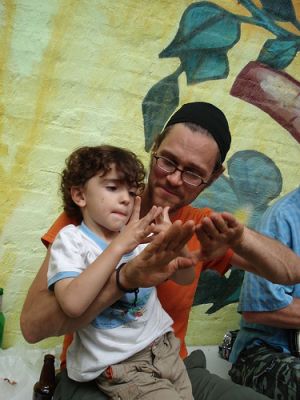 PHOTO: TAKING IT EASY: When he wasn’t covering social upheavals in Latin America, Brad Will was active in a number of activist campaigns and projects in New York City.
PHOTO: TAKING IT EASY: When he wasn’t covering social upheavals in Latin America, Brad Will was active in a number of activist campaigns and projects in New York City.
THE ART OF IMPUNITY
In Mexico, the art of impunity most often takes the form of a kind of ritual incompetence—incompetence so pervasive and implacable that it can only be the result of decisive action, the result of tradition and practice, a truly exquisite craft.
Brad’s case has become part of a now deep and horrid tradition of political murder investigations plagued with an incompetence whose function is simply to cement impunity into the cultural fabric of the law: from the massacre of hundreds of students in Mexico City 40 years ago on October 2, 1968, to the ambush and murder of Triqui radio journalists Felícitas Sánchez and Teresa Merino on April 7, 2008.
The experience of the Will family in their trips to Mexico and the documentation provided in the CNDH report present a level of incompetence in both the state and federal investigations that is too thorough to be accidental.
“Look at the hard evidence,” said Hardy Will, Brad’s father, in a telephone interview, “Brad was shot straight on. He had a high-quality camera with a wide-angle lens that would have picked up any shooter within 35 meters. There were 12 witnesses, including journalists, none of whom saw a shooter near Brad. Our video analyst detected bullet streaks on the last two frames before Brad was hit. The Attorney General Medina Mora and Doctor Wiarco [the special prosecutor in charge of the case] have all this information, but they have chosen to ignore it.”
“Doctor Wiarco and Attorney General Medina Mora are either incompetent or corrupt. Well, Dr. Wiarco might be both,” Hardy Will said. “Sometimes you have to call a spade a spade: They are covering up and obviously getting some direction from above.”
John Gibler is the author of Mexico Unconquered: Chronicles of Power and Revolt, forthcoming from City Lights Books. He is a Global Exchange Media Fellow and writes from Mexico. In 2007 and 2008 he acted as volunteer interpreter for the Will family in meetings with Mexican state and federal officials.

 PAST COVERAGE OF BRAD WILL IN THE INDYPENDENT:
PAST COVERAGE OF BRAD WILL IN THE INDYPENDENT:
Remembering Brad Will
By John Tarleton
October 29, 2007 – The Indypendent
Before his death, Will, a freight-hopping, guitar-playing activist, had spent years on the frontlines of countless movements from efforts to save squats and community gardens in the Lower East Side to engaging in “tree-sits” for weeks at a time high in the canopy of Oregon’s endangered old-growth forests.
A Murder Not Forgotten
By Harry Bubbins
October 29, 2007 – The Indypendent
In the first days after your killing, there were dozens of protests and vigils held all over the world including here in New York. Since then, Friends of Brad Will has evolved into a national network of activists demanding accountability through the arrest and prosecution of the people responsible for your murder. Jail may not be a solution, but something must be done.
Friends of Brad Go to Washington
By Friends of Brad Will
March 16, 2007 – The Indypendent
The Friends of Brad Will traveled to Washington, D.C. March 1 to press Congress and the State Department for a full investigation into the death of the former NYC Indymedia videographer who was gunned down in October while covering protests in the southern Mexican state of Oaxaca.
Brad Will’s Remarkable Life
By John Tarleton
November 1, 2006 – The Indypendent
Brad Will was someone who seemed to be everywhere. Most knew him as an Indymedia activist, but he was also a passionate environmentalist, freedom fighter, musician, and anarchist who was also close to the Earth First! movement where he was a beloved character by many.
Remembering Brad Will
By Indypendent Staff
November 1, 2006 – The Indypendent
Testimonials and tributes poured into the nyc.indymedia.org website in the day’s following Brad Will’s death. Here are excerpts from a few of them…
“One more martyr in a dirty war — One more time to cry and hurt.”
By Brad Will
November 1, 2006 – The Indypendent
yesterday i went for a walk with the good people of oaxaca – was walking all day really – in the afternoon they showed me where the bullets hit the wall – they numbered the ones they could reach – it reminded me of the doorway of amadou diallos home…
Oaxaca Rising
By Leanne Tory-Murphy
May 11, 2005 – The Indypendent
—
source: indypendent.org

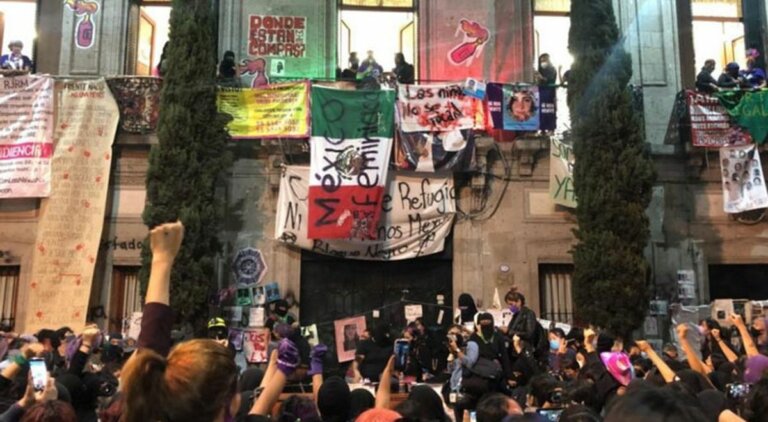
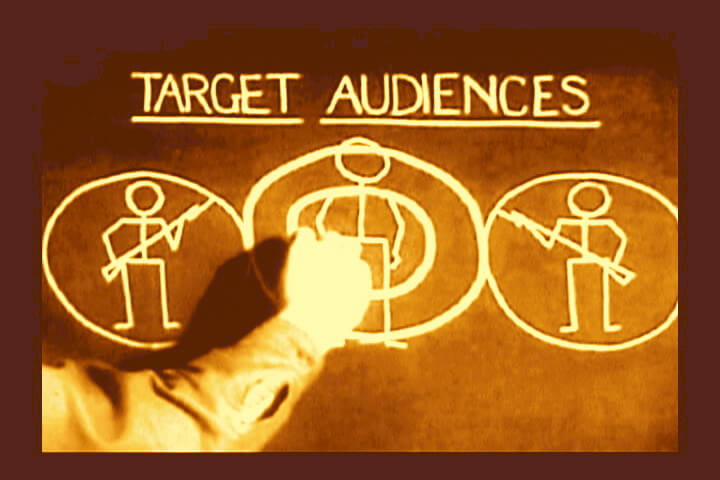
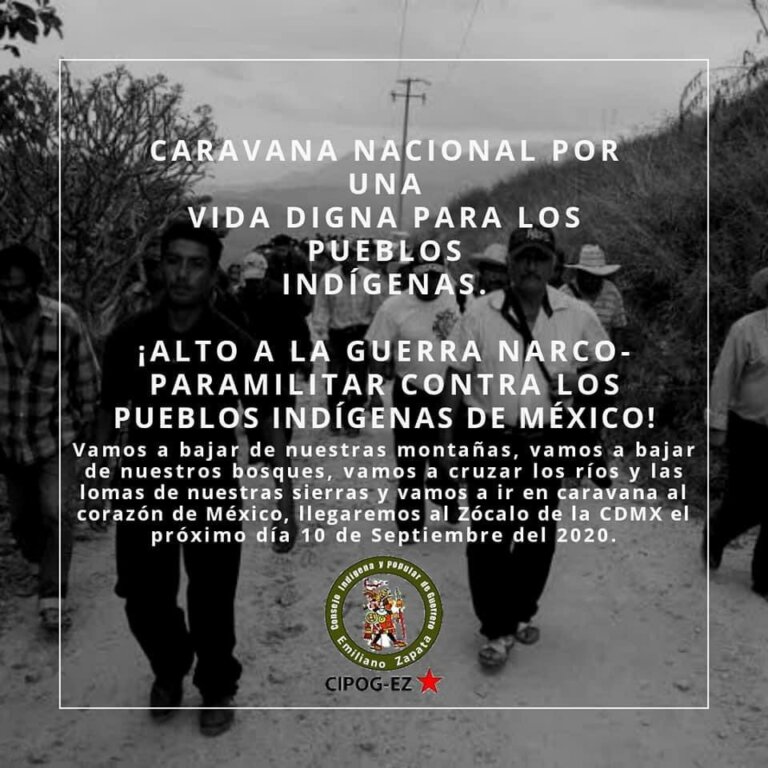
Ignoring Evidence, Mexican Authorities Charge Activists with 2006 Murder of Independent Journalist Brad Will
http://www.democracynow.org/2008/10/20/ignoring_evidence_mexican_authorities_charge_activists